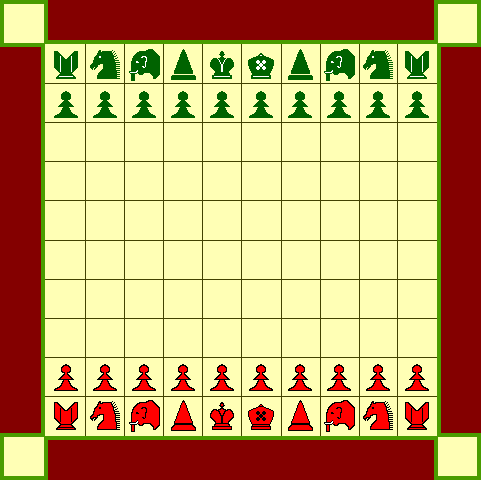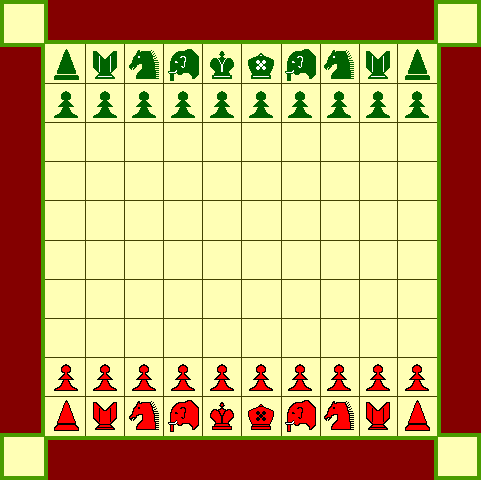Citadel Chess
This game is among the latests of Shatranj variants. It was described by al-amuli in the 14th century and it is typical of that time with the presence of citadels (husun) which are also found in contemporary Tamerlane Chess and the citadel-variant of Circular Chess.
Shatranj al-Husun had another peculiarity: the presence of a piece moving like the modern Bishop, more than 100 years before this piece has been invented!
DESCRIPTION:
The board has 10x10 squares with 4 special squares at the corners: the citadels. Depending on the sources, they can be connected either diagonally (as on the diagram below), or outside the Rooks, or behind the Rooks.
They are 20 pieces per side, all those from regular Shatranj, 2 Dabbabas and the corresponding 2 extra Pawns. Shahs were set face-to-face in most cases but it happens that they could be in f1 and e10. Two settings were possible for the Dabbabas as shown on the diagrams.

Setup 1

Setup 2
RULES:
The rules followed most rules of Shatranj.
If a Shah can enter an opposite citadel, it is a draw game.
 In this game, the Dabbaba moved "like a Rukh but
diagonally". That means that this piece moved exactly like a
modern Bishop.
In this game, the Dabbaba moved "like a Rukh but
diagonally". That means that this piece moved exactly like a
modern Bishop.
Let's recall that the Bishop got its modern long range move in Spain, probably Valencia, in the end of the 15th century (simultaneously with the Queen). Is it possible that this Oriental Dabbaba had some influence? There is no fact to affirm that, so it is likely that this move was "invented" several times. (also invented for Courier Chess and for Grant Acedrex, both from 13th century).
OTHER SHATRANJ VARIANTS:





